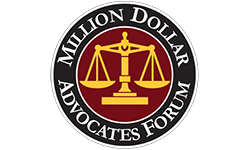How Do You Know If You’re Too Tired to Drive?

We all know how important sleep is. We should all prioritize creating a strong sleep routine that gives us the energy to get through each day. However, in a world filled with long work hours, endless TV streaming options, and social obligations, it often feels as if there is not enough time left over for sleep.
One of the most dangerous places to be when you haven’t had enough sleep is behind the steering wheel of a motor vehicle. In this article, we’ll help you learn to identify when you’re too tired to drive as well as the dangers associated with ignoring those signs. If you have any further questions about the following content, you can always speak with one of our Maryland car accident attorneys for clarification.
What Is Drowsy Driving?
Driving is a task that requires all of your attention and focus. Safely getting from point A to point B should always be a priority when you are behind the wheel. When you are tired, getting anywhere safely becomes a lot more complicated—and dangerous.
Drowsing driving is when you pair the act of driving with any amount of sleep loss, fatigue, or feelings of drowsiness.
Dangers of Drowsy Driving
One of the biggest risks associated with drowsy driving is falling asleep at the wheel. The CDC estimates that one out of every 25 adult drivers has fallen asleep while driving at least once over the past 30 days. While not every one of these occurrences will lead to an accident, the risk is still astronomically high.
Falling asleep at the wheel does not always look like someone with their eyes closed and head slumped forward. Microsleep occurs when you briefly lose consciousness for four or five seconds, and you may otherwise still look alert during that time.
Data from the National Highway Traffic Safety Administration (NHTSA) shows that drowsy drivers caused an estimated 91,000 crashes in 2017 alone. These drowsy driving accidents killed approximately 800 people and injured another 50,000.
The NHTSA stresses that these are only estimates and are likely lower than reality, with the actual number of fatal drowsy driving accidents probably closer to somewhere around 6,000 per year.
However, falling asleep at the wheel is not the only hazard associated with drowsy driving. Simply being too tired to drive is dangerous enough, even if you stay awake for your entire journey. Operating a vehicle while you’re tired is dangerous because it affects motorists not all that differently from drunk driving. Drowsiness can:
- Make you less attentive to the road. As discussed earlier in this blog, driving requires you to focus on the task at hand. When you are tired, drowsy, sleepy, or fatigued, you are simply not able to devote your full attention to the road.
- Slow your reaction time. When you notice an emergency on the road up ahead, you only have a short amount of time to react. When you’re tired or fatigued, your ability to brake quickly or take evasive steering maneuvers is significantly lessened.
- Impact your decision-making ability. You know how important it is to do things like wear your seatbelt, drive the speed limit, and come to a complete stop at all stop signs. Your tiredness impacts your ability to make good decisions, which may cause you to engage in risky or unsafe driving behavior.
Signs That You’re Too Tired to Drive
Your body will do its best to warn you that you haven’t had enough sleep and it’s time for some rest. Unfortunately, many people have been conditioned to ignore these signs. Whether struggling to get through the last hour of a work shift, a boring class at school, or the final episode of a binge-worthy TV show, you might be accustomed to ignoring your own body’s sleep signals.
As a driver who strives to protect both yourself and others on the road, it’s time to start re-familiarizing yourself with signs of tiredness. Fatigue involves much more than just that sleepy feeling you might get when you stay up a little later than normal.
If you are driving and start experiencing any of the following symptoms, you are probably too tired to operate a vehicle:
- Frequent yawning or blinking
- Trouble recalling the last stretch of road or several miles that you drove
- Drifting in and out of your lane without realizing it
- Driving over the rumble strip on the side of some roads
These are all indications that you are not well-rested enough to be driving a motor vehicle. For example, drifting out of your lane or driving over rumble strips can indicate that you are either not paying attention or are slowly slipping into sleep and losing control over where you steer.
Do not ignore these signs and symptoms of being too tired to drive. Pull over to a safe area and take a quick nap or swap out driving with a passenger.
How Much Sleep Do You Need?
The average adult needs between seven and eight hours of sleep every night. Getting sufficient sleep is the only way to truly limit the risks associated with drowsy driving. You can improve your chances of getting a good night’s sleep by:
- Setting a reasonable bedtime and sticking to it
- Turning off screens one to two hours before bed
- Drinking a cup of herbal tea before bed
- Using blackout curtains if you are a night worker who sleeps during the day
Some disorders can impact your ability to fall or stay asleep, including sleep apnea. The CDC even cites sleep apnea as a factor for drowsy driving. If you have any of the following symptoms of sleep apnea, speak with your doctor to see what you can do to improve your sleep and your safety while driving:
- Frequent loud snoring
- Episodes of not breathing during sleep
- Waking up with a dry mouth
- Waking up with a headache
- Feeling very tired after getting a full night’s sleep
- Excessive sleepiness during the day
Limiting Fatigue in the Short-Term
While the best way to limit feeling too tired to drive will always be to get more sleep, the NHTSA advises that certain actions can help in the short term. For example, drinking a coffee, energy drink, or something with caffeine can improve your alertness.
These measures are still not a substitute for sleep, though. Even if you feel more alert after drinking caffeine, you can still engage in microsleep without realizing it.
Coupling your caffeine intake with a 20-minute nap has been shown to be more effective than caffeine alone.
Getting Help After an Accident
If you were injured because of another driver’s negligence, you deserve help on your road to recovery. At Belsky & Horowitz, LLC, we understand what happens when someone who is too tired to drive gets behind the wheel. When you reach out to us for a free consultation, we’ll guide you through your legal options for recovering compensation for things like medical bills, lost wages, pain and suffering, and more.





